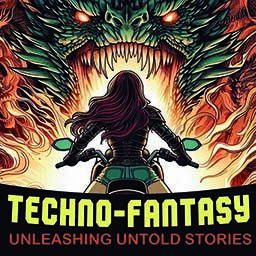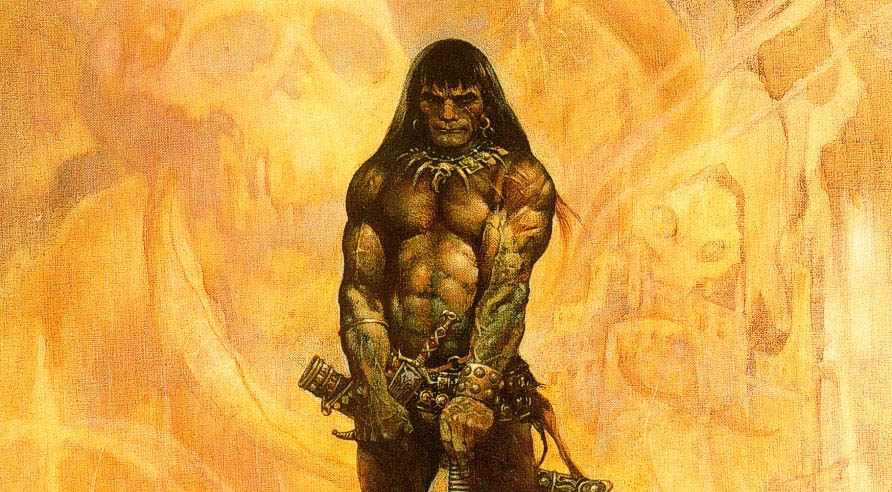If you missed, part 1, follow this link.
The Character’s Revival and Changes Made by Lin Carter and L. Sprague de Camp
Come with us, readers, to a world where silver spirals rise to the stars in gleaming cities, sorcerers cast spells from underground lairs, malevolent spirits lurk among ruins, primitive monsters emerge from the dense forest thickets, and the fate of kingdoms rests on the blades of broad swords wielded by heroes of supernatural power and valor.
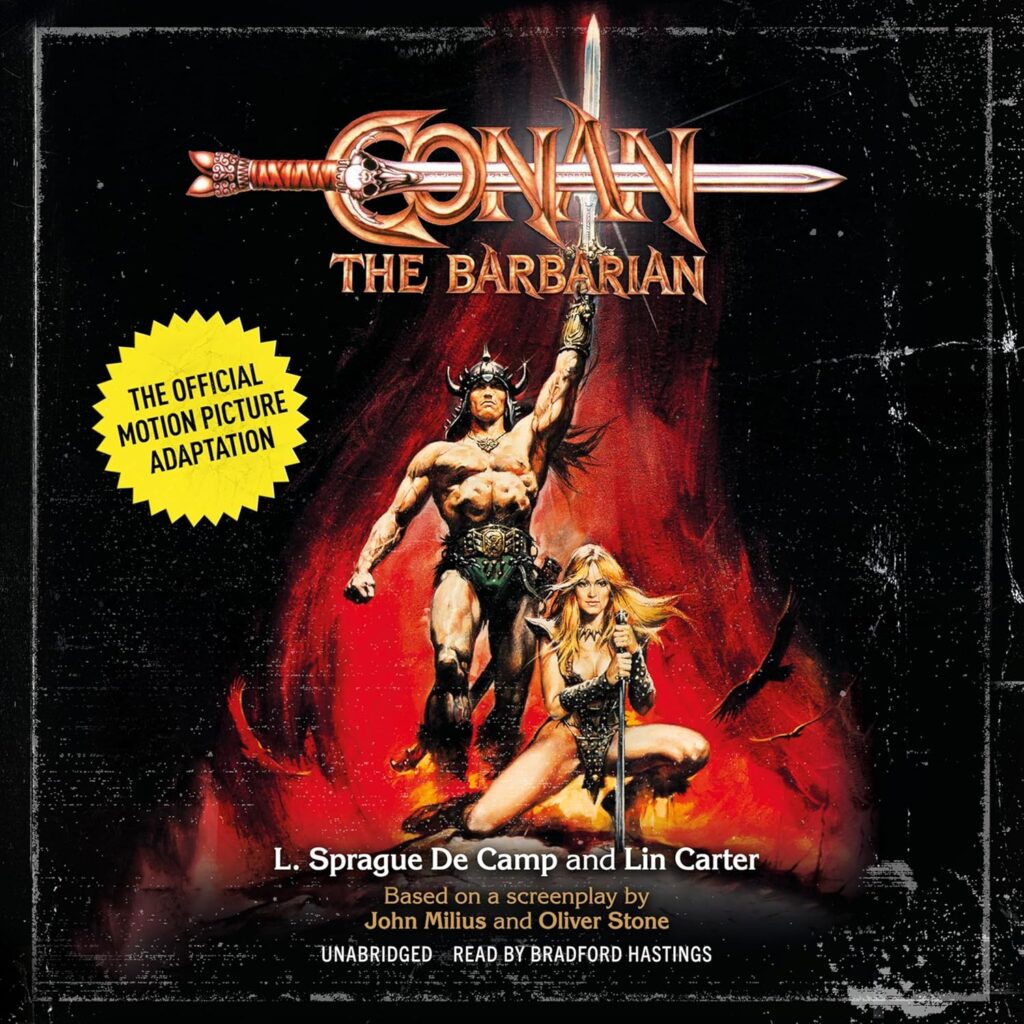
After Robert E. Howard’s death, the character Conan entered a period of relative obscurity until he was revived by two influential writers, Lin Carter and L. Sprague de Camp, who played a crucial role in expanding Conan’s legacy.
In the 1950s, L. Sprague de Camp began revising and editing Howard’s manuscripts, collaborating with Lin Carter in the 1960s to reintroduce Conan to a modern audience. They worked to fill the gaps left by Howard, organizing the existing stories and writing new adventures for the Cimmerian.
Lin Carter
Linwood Vrooman Carter, better known as Lin Carter, was born on June 9, 1930, and passed away on February 7, 1988. He was a writer, editor, and critic of science fiction and fantasy. Carter is best known for his own creation, the Thongor series, and for his role as editor of the Ballantine Adult Fantasy series, as well as his work on Conan, of course. His passion for fantasy and his ability to revive and expand imaginary worlds made him a natural choice to collaborate on the revitalization of Conan.

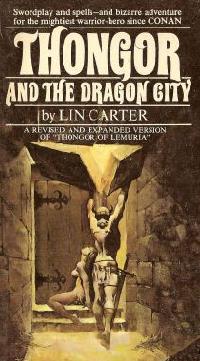
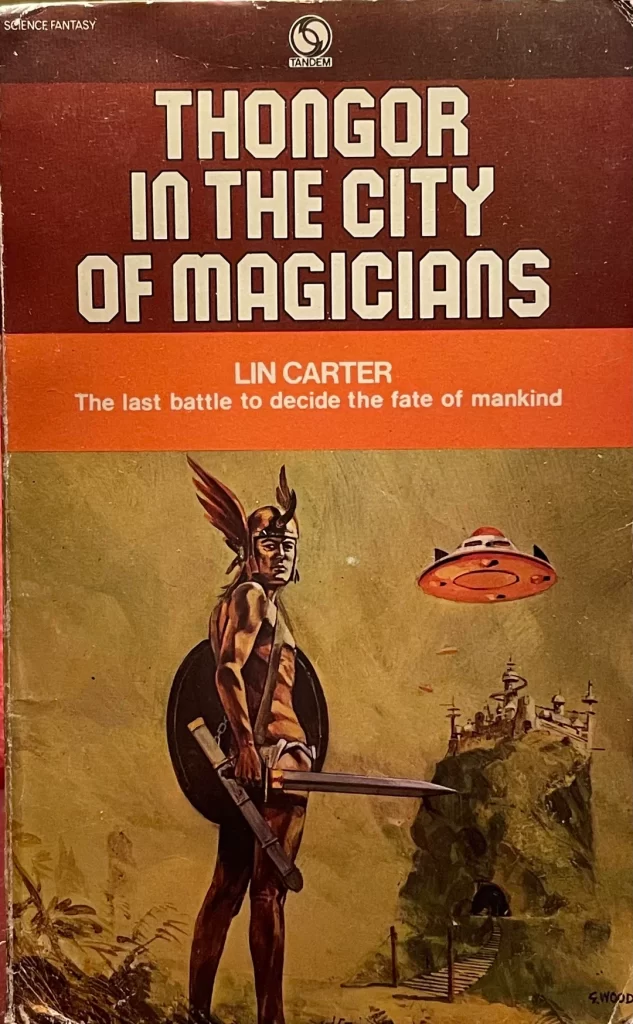
L. Sprague de Camp
Lyon Sprague de Camp, born on November 27, 1907, and passed away on November 6, 2000, was a prolific writer and historian of science fiction and fantasy. De Camp had a long and diverse career, contributing significantly to the popularization of the genre. De Camp is credited with coining the term “E.T.” in science fiction literature. He is remembered not only for his original works but also for his revision and editing of the works of other authors, including Robert E. Howard.
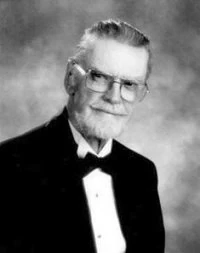
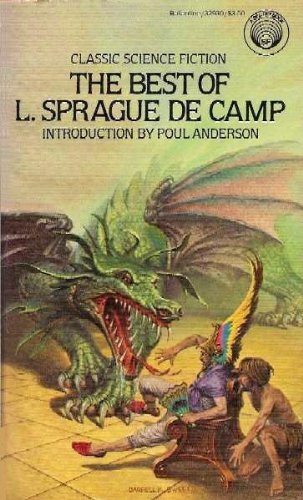
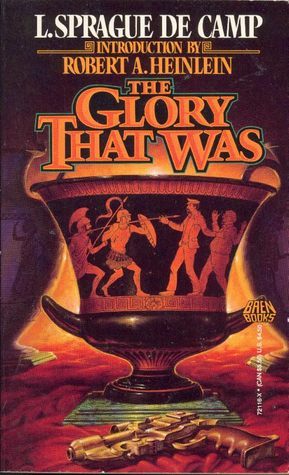
Gnome Press, a small publisher specializing in science fiction and fantasy, was crucial in reintroducing Conan to the public. It was through Gnome Press that L. Sprague de Camp came into contact with Howard’s work. He was initially invited to revise and edit Conan’s stories. However, his work with Lancer Books in the 1960s led to his extensive collaboration with Lin Carter on a new collection of books that once again catapulted the character to popular acclaim.
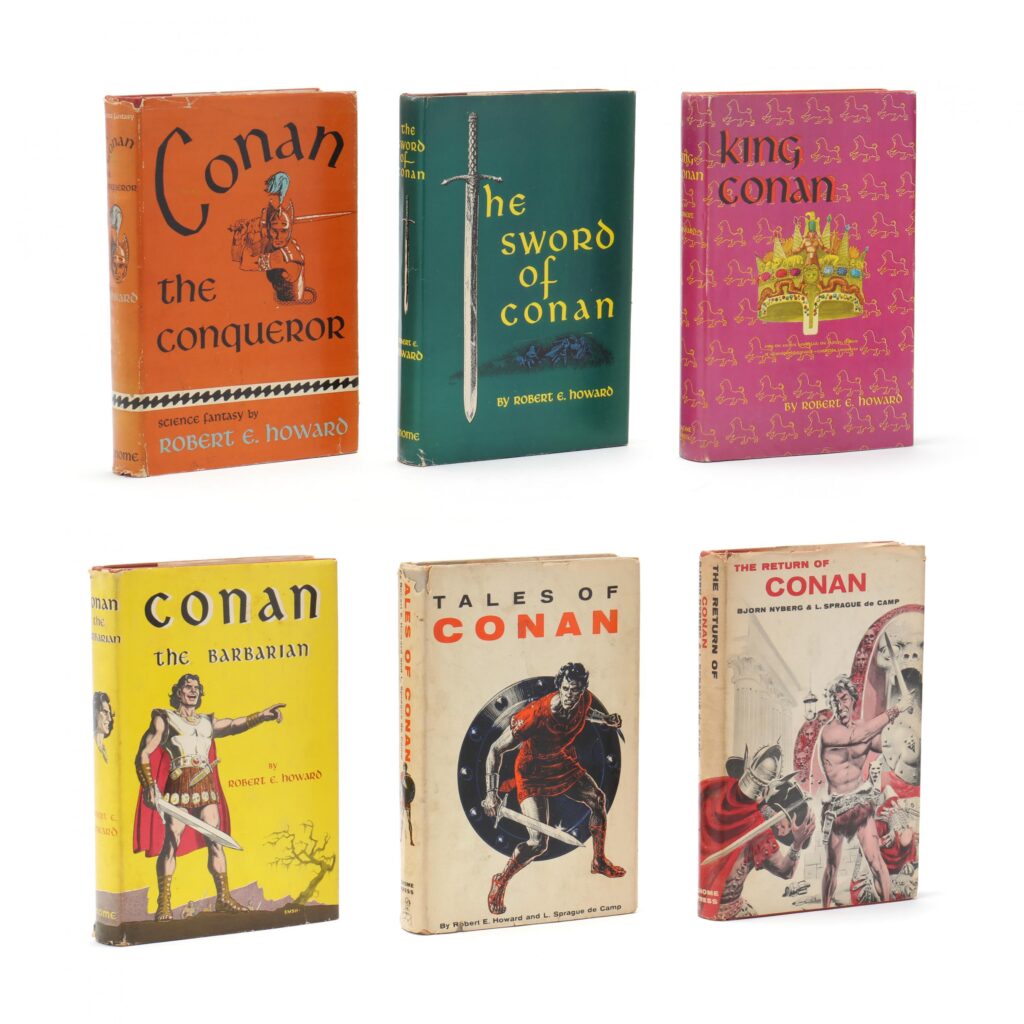
In this new collection, Carter and de Camp approached Howard’s works in three main ways:
- Publication of Completed Works: They edited and published complete Conan stories that Howard had finished, ensuring they were accessible to new readers.
- Transformation of Other Stories: In some cases, they adapted stories of other characters created by Howard, transforming them into Conan adventures. This involved adjustments and rewrites to fit these tales into the character’s universe.
- Creation of New Stories: In addition to editing and adapting, Carter and de Camp also wrote new Conan stories, expanding the Hyborian universe and adding new layers to the character’s mythology.
One of the duo’s greatest successes was choosing artist Frank Frazetta as the cover artist for Conan’s collection published by Lancer Books between 1966 and 1977. Frazetta was so influential in his career that he redefined the fantasy and fiction imagery with his works, influencing the art of several generations of illustrators.
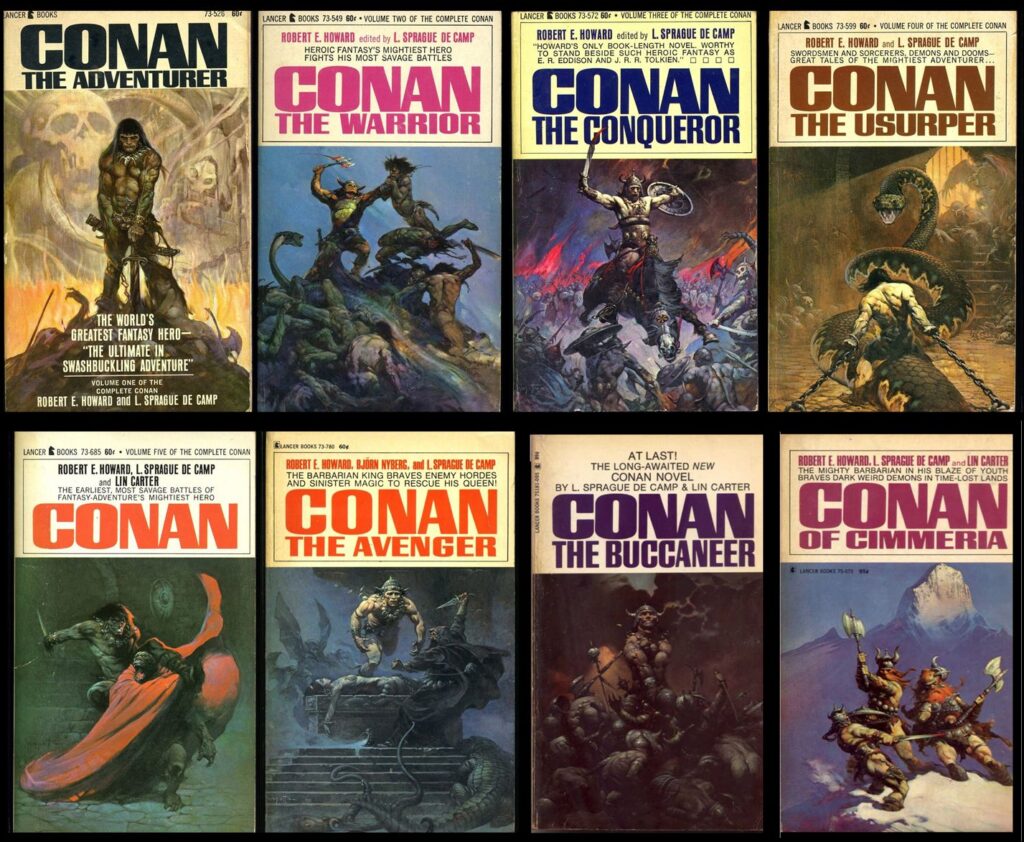
Frank Frazetta’s iconic covers played a significant role in defining Conan’s visual representation and revitalizing the character. Frazetta captured the brutal and heroic essence of Conan in his illustrations. L. Sprague de Camp recognized the impact that visual arts could have on his work and chose Frazetta as the main illustrator for the Cimmerian’s books. Frazetta’s powerful and dynamic images helped cement Conan’s popularity and attracted a new generation of readers.
Frank Frazetta
Frank Frazetta (1928–2010) was an American illustrator and painter, widely recognized for his significant impact on fantasy art and pop culture. Born in Brooklyn, New York, Frazetta showed artistic talent from a young age and began his career at 16, working in comics. He contributed to titles like Buck Rogers, Flash Gordon, and Tarzan, gaining experience and refining his style.
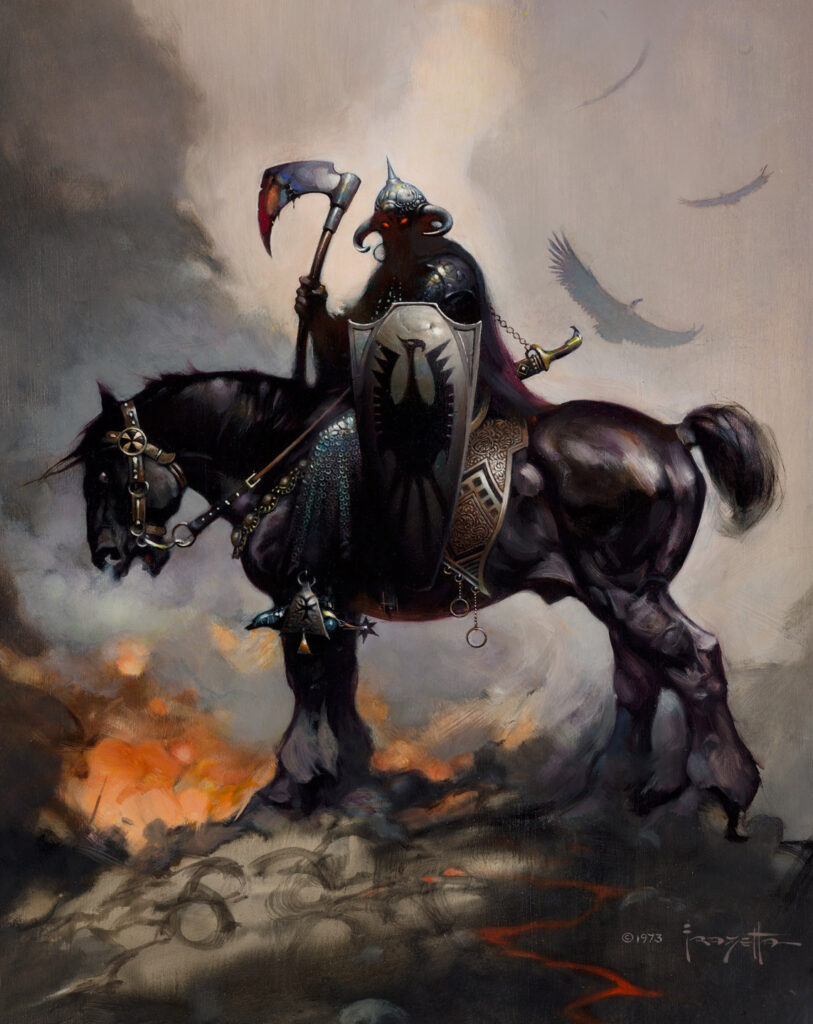
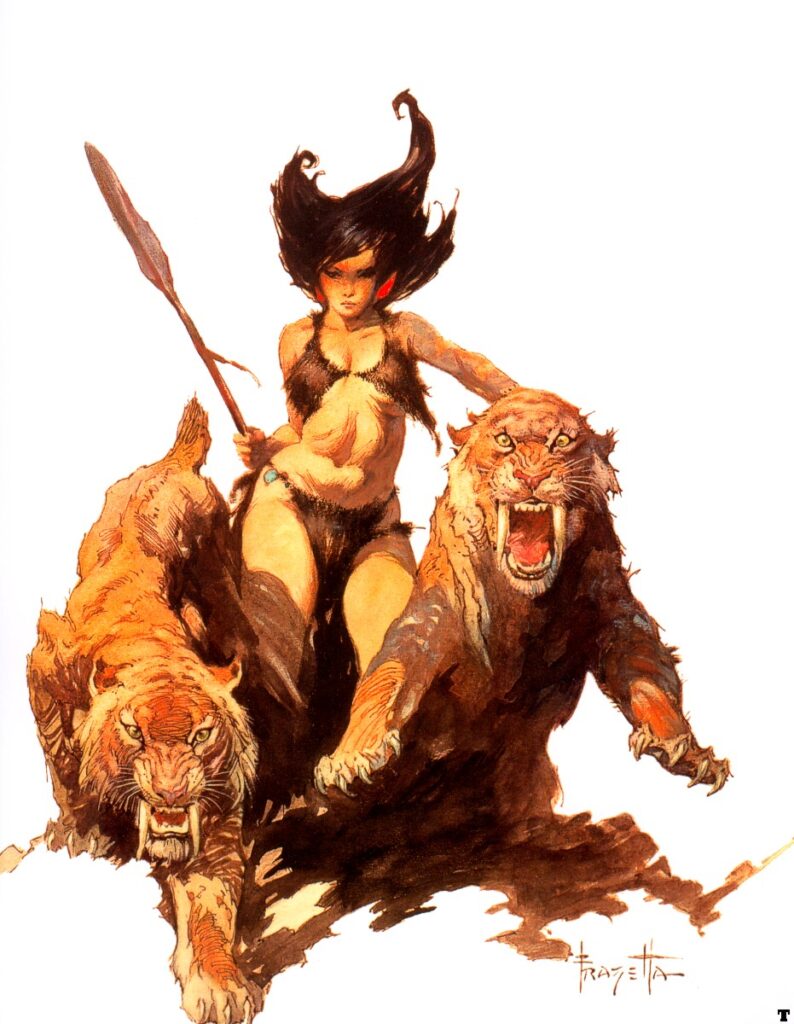
In the late 1950s and early 1960s, Frazetta began working on book and magazine covers for science fiction and fantasy. His unique ability to capture dynamic scenes and muscular characters, with a striking style of light and shadow, quickly made him one of the most sought-after artists in the genre.
One of Frazetta’s most emblematic works was his contribution to the covers of Robert E. Howard’s Conan the Cimmerian books, published by Lancer Books in the 1960s. Frazetta’s illustrations of Conan redefined the character’s image and had a lasting impact on the depiction of fantasy heroes. His covers, such as those for Conan the Adventurer, Conan the Buccaneer, and Conan the Conqueror, are iconic, immortalizing Conan as a powerful and indomitable warrior.
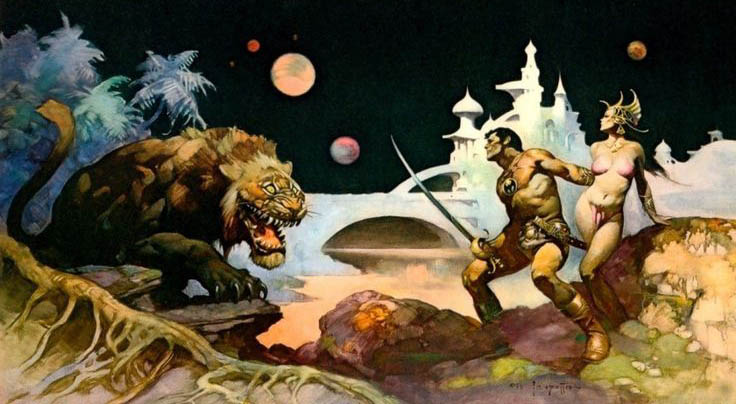
In addition to his work on Conan, Frazetta created illustrations for other notable series, including Edgar Rice Burroughs’ John Carter of Mars and Tarzan. His paintings also adorned album covers for bands like Molly Hatchet and Nazareth, as well as movie posters like Fire and Ice (1983), an animated film co-created with Ralph Bakshi.
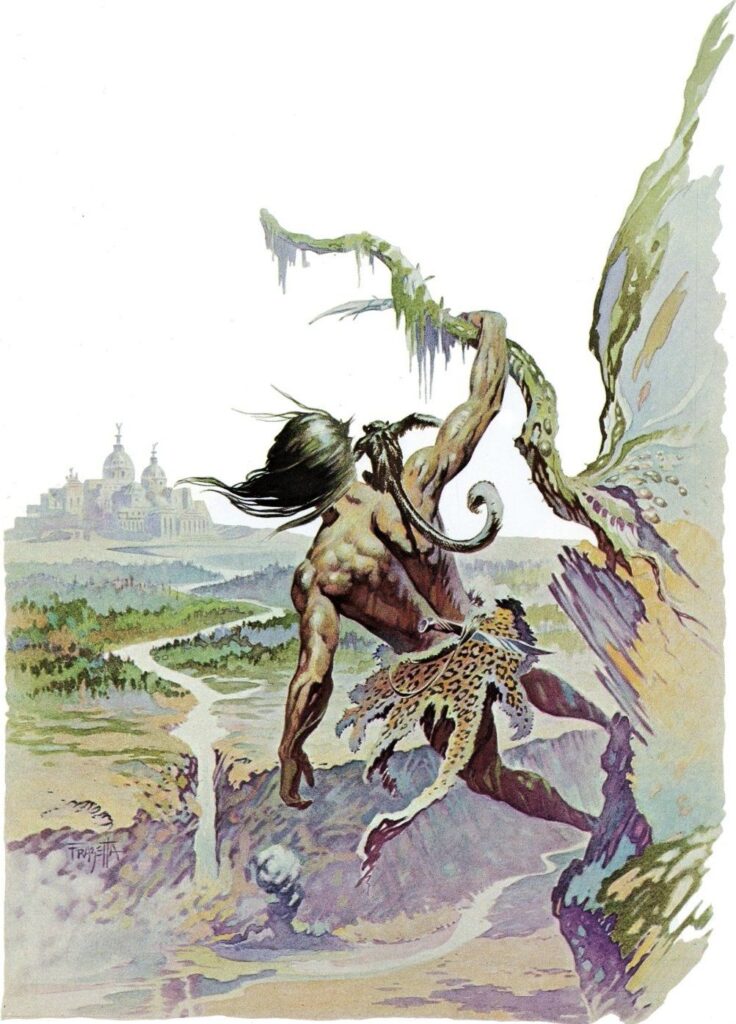
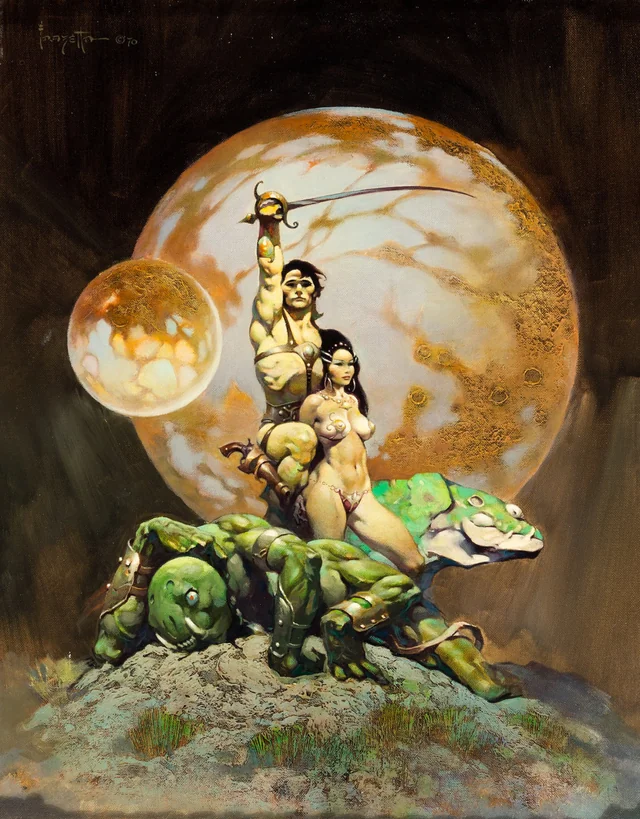
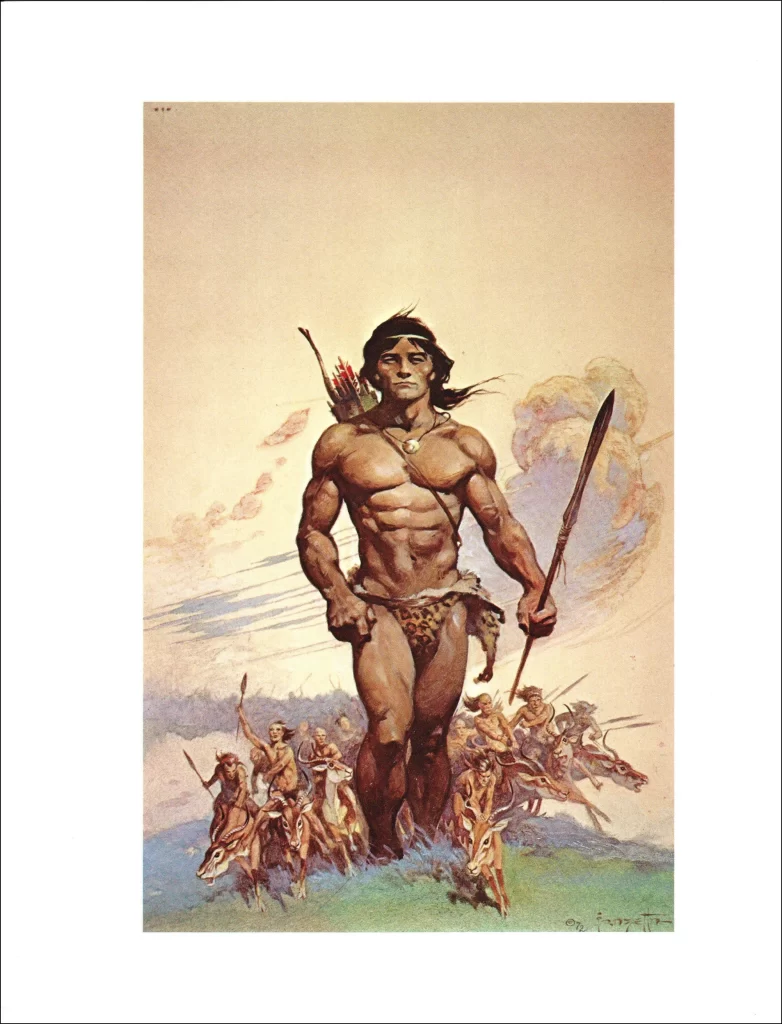
Frazetta published several books compiling his artwork. Among them, the most notable are:
- The Fantastic Art of Frank Frazetta (1975) – A collection showcasing some of his most famous paintings and illustrations.
- Legacy: Selected Paintings and Drawings (1999) – A retrospective of his works, including preliminary studies and sketches.
- Testament: The Life and Art of Frank Frazetta (2001) – An illustrated biography that also includes interviews and insights into his career and style.
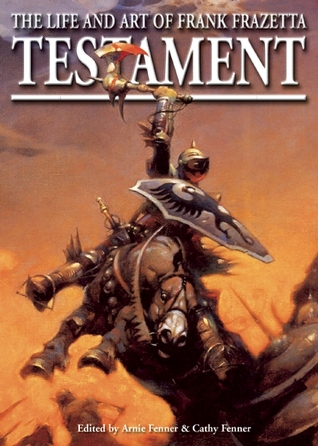
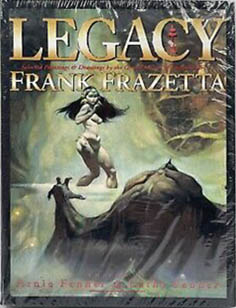
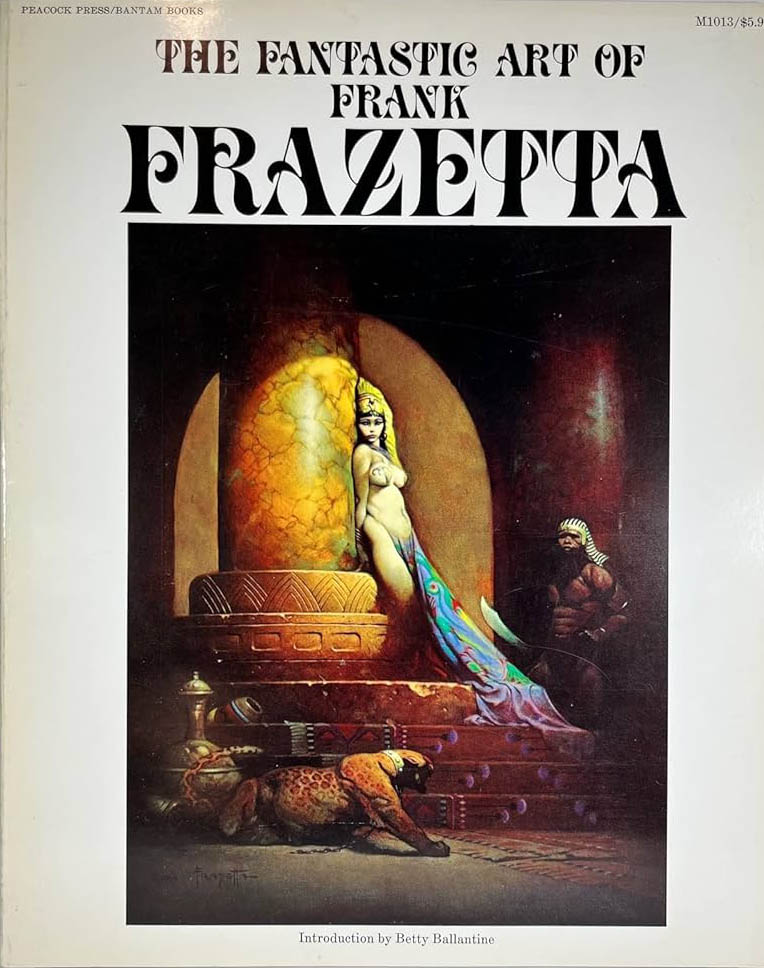
Frank Frazetta’s influence extends beyond book pages and album covers; he is widely credited with shaping the modern fantasy aesthetic, inspiring countless artists, filmmakers, and designers. His legacy lives on through his works, which continue to be celebrated and admired by fans of all ages.
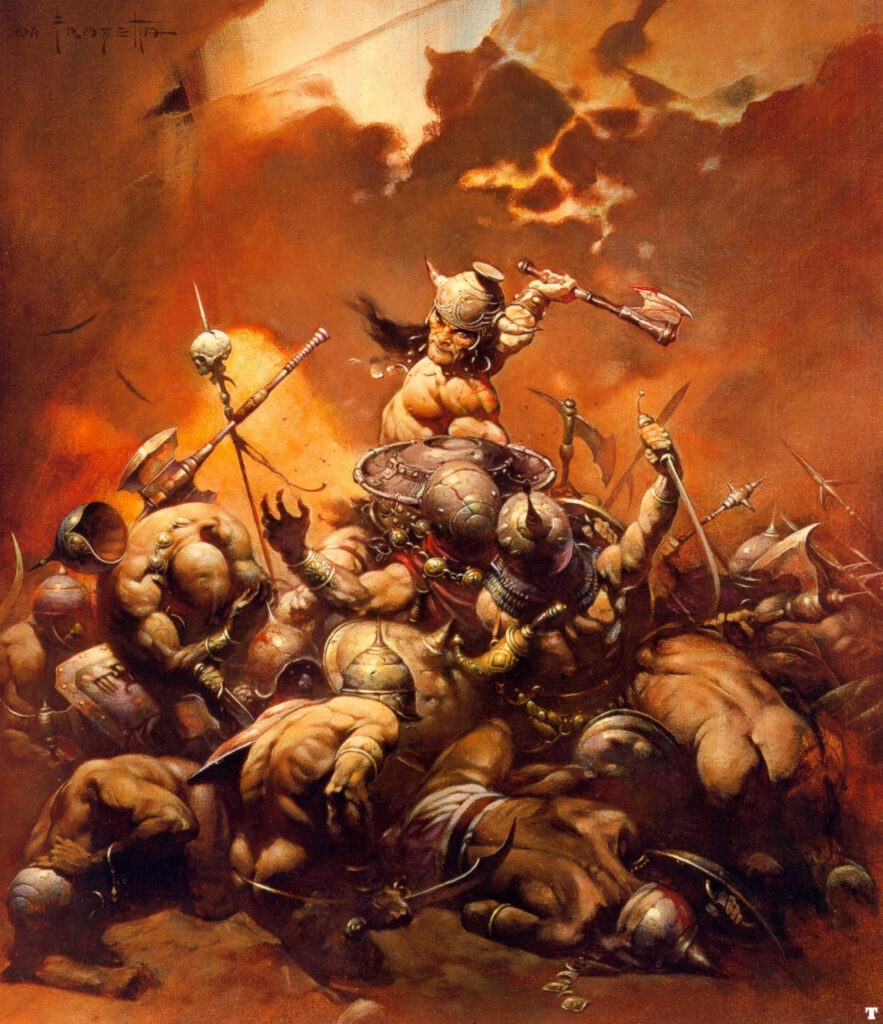
Though their work was crucial for Conan’s survival, Carter and de Camp also faced criticism for their alterations to Howard’s original material. Some fans and critics argue that their additions diluted the author’s original vision. However, it is undeniable that their efforts helped keep Conan relevant and introduced the character to new generations of readers.
The contributions of Carter and de Camp, along with Frazetta’s striking illustrations, ensured that Conan not only survived the test of time but also became a central figure in fantasy literature, influencing countless authors and fans around the world.
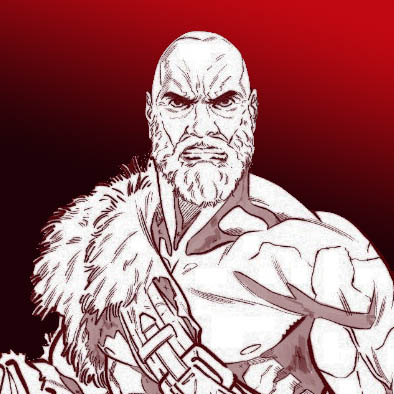
Article by Victor X
Victor Schmidt’s lifelong passions for literature and sports led him to discover his true love in superhero comics. Driven by an unyielding pursuit of the perfect story, Victor channels his energy into delivering insightful and valuable content to the comic book community while continuously refining his craft as a writer. In addition to his writing, he serves as an editor and creative reviewer, ensuring that every piece he touches is polished, impactful, and resonates with readers.
Affiliates disclaimer
Some of the links in this article may be affiliate links, which means we may receive a small commission, at no additional cost to you, if you decide to make a purchase through one of our recommended partners. We only recommend products we trust and believe will be beneficial to our readers. This help support our efforts in bringing you valuable content and making indie comics. Thank you for your support!
